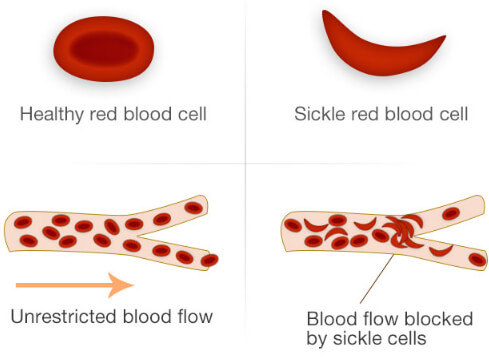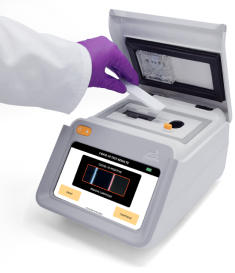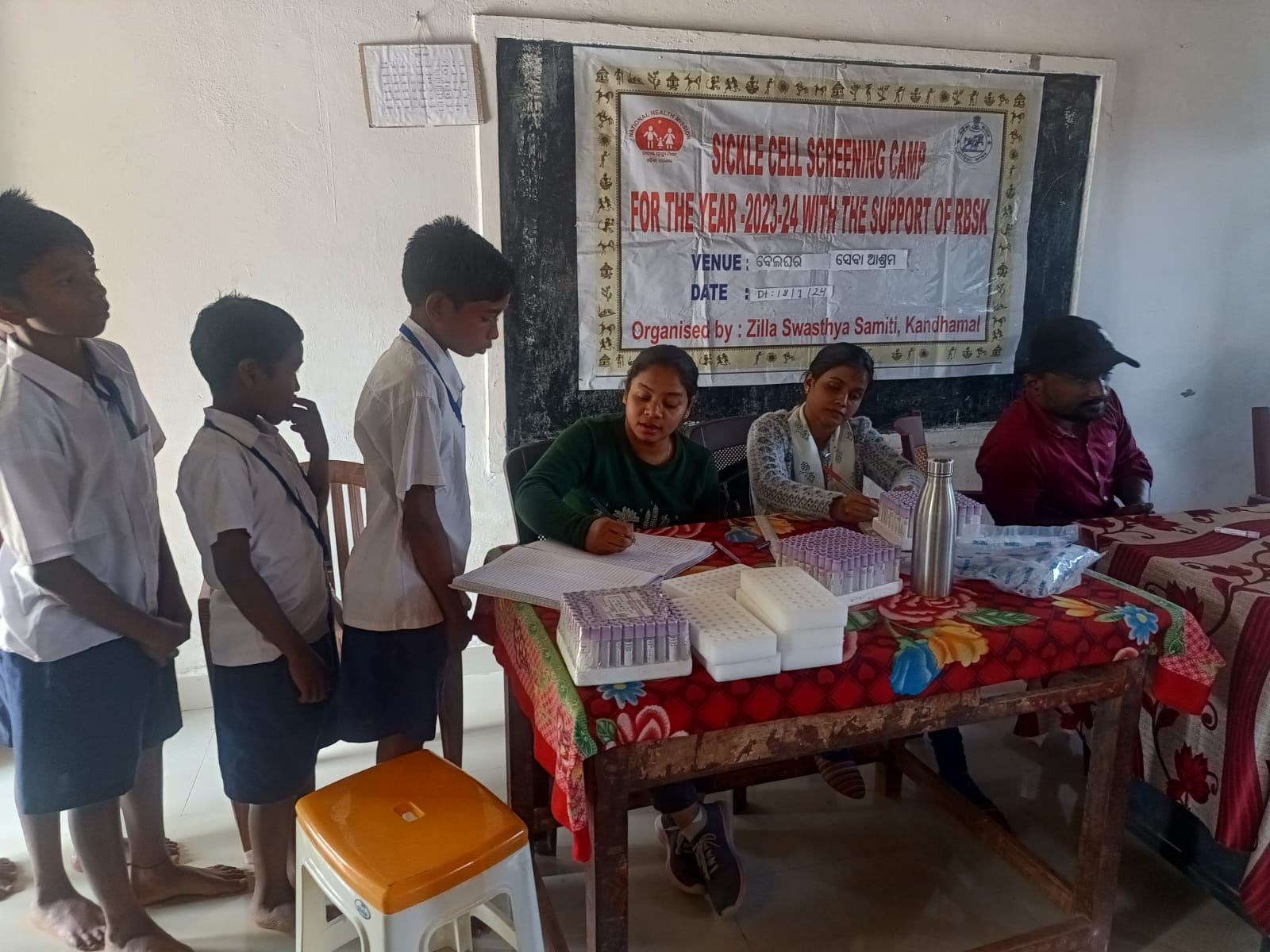Sickle Cell Disease (SCD) is a debilitating inherited blood disorder that affects millions worldwide. Alarmingly, the life expectancy of adults with SCD is approximately 52.6 years, which is about 20 years shorter than that of adults without the disease1. It is also recognized as a disability according to the Right of Persons with Disabilities (RPWD) Act 2016.2 However, for decades, the gravity of this inherited blood disorder has gone unrecognized.
In 2006, the World Health Organization (WHO) declared SCD a public health priority and declared June 19th as World Sickle Cell Awareness Day. This day provides an opportune moment to bring focus to this pervasive issue, particularly for countries like India, as it bears one of the heaviest burdens of SCD globally, with a staggering 20 million individuals diagnosed with the disease in 20233.
What is Sickle Cell Disease?

Prevalence of SCD in India
In India, 1 in 86 births have SCD4. Maharashtra bears the maximum disease burden at 29.8%, followed by Madhya Pradesh and other States in Central and Southern India, with major prevalence in the tribal areas.
Tribal communities in India, historically endemic to malaria, developed a protective trait where their RBCs assumed sickle shape. This adaptation, aimed at surviving malaria, inadvertently increased their susceptibility to SCD and alpha-thalassemia over generations5.
Treatment for SCD includes pain management, nutritional support and blood transfusion in extreme cases of pain due to obstructed blood flow to various organs. Early diagnosis is crucial for timely treatment but often eludes underserved communities due to a lack of access to comprehensive healthcare facilities.
Government Initiatives and National Missions to Combat Sickle Cell Disease
In 2016, the Government of India, through the Ministry of Health and Family Welfare (MoHFW), released national guidelines on “Prevention and Control of Haemoglobinopathies6,” addressing SCD. In addition, the Ministry of Tribal Affairs (MoTA) established the National Council for SCD. It launched the SCD Support Corner7, to create a self-registration system for people with Sickle Cell Disease and Sickle Cell Trait, bridging the gap between patients and health facilities in tribal areas.
In 2023, the National Sickle Cell Anaemia Elimination Mission was launched to eliminate SCD in India by 2047. The project focuses on raising awareness, screening of nearly seven crore individuals, and counselling through combined efforts of central ministries and state governments. Since the onset of this mission, more than one crore people have been screened for SCD8.
Capital Infusions through Blended Finance
To achieve the ambitious goal of eliminating SCD by 2047, the Government of India promotes the use of point-of-care, cost-effective, and efficient diagnostic solutions. However, developing and scaling such technologies require significant investment. In this context, the SAMRIDH Healthcare Blended Finance Facility brings in much-needed commercial capital and technical assistance to enable impact-led businesses to scale health tech innovations.
 One such notable solution to address SCD is “Gazelle Hb Variant” developed by Hemex Health9, which has been supported for scale up under SAMRIDH. Gazelle™ is a “Make in India” affordable, portable device designed for India and Africa for identifying haemoglobin variants like SCD and beta-thalassemia. This battery-operated device is suitable for remote locations and can withstand temperatures up to 45 degrees while providing digital testing records in 8 minutes. SAMRIDH has provided financial assistance to the enterprise to deploy Gazelle across 8 states, specifically for the benefit of remote and tribal populations.
One such notable solution to address SCD is “Gazelle Hb Variant” developed by Hemex Health9, which has been supported for scale up under SAMRIDH. Gazelle™ is a “Make in India” affordable, portable device designed for India and Africa for identifying haemoglobin variants like SCD and beta-thalassemia. This battery-operated device is suitable for remote locations and can withstand temperatures up to 45 degrees while providing digital testing records in 8 minutes. SAMRIDH has provided financial assistance to the enterprise to deploy Gazelle across 8 states, specifically for the benefit of remote and tribal populations.
Multi-Stakeholder Collaborations
In addition to rapid detection in remote areas, communities must recognize early symptoms of SCD and initiate timely screening of newborn children. Such awareness measures can go a long way in dispelling the stigma in tribal communities, where SCD is still misunderstood as a curse.
SAMRIDH’s support to Redwing Labs has complemented efforts of the Government of Odisha in addressing SCD in Kandhamal district. By collaborating with partners like Indian Oil Corporation Limited, Redwing Labs facilitated early-stage diagnosis of the disease in remote areas of the district. Under this partnership, SAMRIDH-supported Redwing Labs used drones for transporting blood samples from remote tribal villages to diagnostic labs significantly reducing the turn-around-time for diagnosis and enabling prompt treatment.
 These drone-enabled screening camps are part of the National Sickle Cell Anemia Elimination Mission, launched in 2023, which aims to combat SCD in over 250 high-burden tribal districts and eliminate the genetic transmission of the disease by 2047. Early diagnosis through such initiatives is crucial for managing severe illness early in life. Such initiatives demonstrate the effectiveness of multi-stakeholder collaborations in leveraging technology to improve public health outcomes.
These drone-enabled screening camps are part of the National Sickle Cell Anemia Elimination Mission, launched in 2023, which aims to combat SCD in over 250 high-burden tribal districts and eliminate the genetic transmission of the disease by 2047. Early diagnosis through such initiatives is crucial for managing severe illness early in life. Such initiatives demonstrate the effectiveness of multi-stakeholder collaborations in leveraging technology to improve public health outcomes.
The private sector’s role in innovating and deploying technology is vital in addressing public health challenges like SCD. SAMRIDH’s strategy of building an ecosystem where private innovations complement public initiatives not only mobilizes commercial capital but also fosters collaborations among stakeholders and communities. As we strive towards the ambitious goal of eliminating SCD by 2047, it is imperative that we continue to support and expand these efforts. By leading initiatives that promote innovation and foster multi-stakeholder partnerships, we can accelerate progress towards a future where SCD no longer poses a threat to generations to come.
[1] https://www.hematology.org/newsroom/press-releases/2023/quantifying-the-life-expectancy-gap-for-people-living-with-sickle-cell-disease
[2] https://www.ncbi.nlm.nih.gov/pmc/articles/PMC5419007
[5] https://www.forbesindia.com/blog/health/why-sickle-cell-disease-elimination-in-tribal-india-is-a-necessity/
[6]https://nhm.gov.in/images/pdf/programmes/RBSK/Resource_Documents/Guidelines_on_Hemoglobinopathies_in%20India.pdf
[8] https://economictimes.indiatimes.com/news/india/over-1-crore-people-screened-for-sickle-cell-disease-under-national-mission

